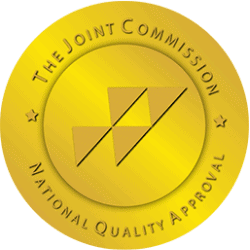You’re ready to give up oxycodone, but you’re scared. You’ve been a little sick between doses before, and you know that it’s just the beginning of what detox feels like. You don’t think you can make it.
We understand. And we disagree.
Oxycodone withdrawal is certainly intense, and many people say it’s one of the most uncomfortable things they’ve ever been through.
But people can and do get through it. You can too.
In this article, we will:
- We’ll tell you what happens during withdrawal and how long things will last.
- There are some things you can do to support the process. We’ll tell you what those are.
- Withdrawal works best with help. You’ll learn how that works.
What Happens During Withdrawal?
Your addiction is like your best friend. It follows you around everywhere, and in time, you can’t imagine your life without it. And like some friends, your addiction will inflict pain when you try to break up. That discomfort is known as withdrawal.
Your brain cells have changed due to your long relationship with drugs. They can’t function normally without them. When you take the substances away, your brain and body overreact.
Within one or two hours of your last dose, experts say, you’re likely to feel:
- Mental health symptoms. Anxiety, nervousness, and drug cravings kick in.
- Flu-like signs. Sore muscles, sweating, and chills begin.
- Digestive distress. You may vomit or have diarrhea.
These symptoms may seem mild. You may have felt them a time or two in the past. But when withdrawal deepens, the symptoms grow more severe.
People who move all the way through withdrawal describe intense, overwhelming distress. They talk about feeling as though they’re pulled apart. They say it’s terrifying. They also say it drives them back to drugs, as they want to feel better as quickly as possible.

Oxycodone Withdrawal Timeline
When you feel sick and distressed, you’re hoping the problem will end quickly. Unfortunately, moving through this part of recovery can take time.
Experts say that withdrawal moves in three distinct phases:
- Acute withdrawal: This stage lasts for about five days, and it’s characterized by depression, insomnia, vomiting, diarrhea, and belly pain.
- Rebalance: This phase lasts for about two weeks, and you might feel chills and sore muscles as your body adjusts.
- Extended healing: This phase can last a week or longer, and it’s characterized by anxiety, insomnia, and restlessness.
It’s important to understand that withdrawal isn’t a cure for addiction. When it’s finished, you’ll still need to get help with cravings. You’ll need to dig into the roots of your habits. You’ll need to build up skills to help you move past your triggers. That work happens in rehab, which you’ll start as soon as detox is over.
At-Home Withdrawal Is Possible
Opioid withdrawal is natural, and it’s possible for you to start your battle against oxycodone in the comfort of your own home. But you will need to take precautions to ensure that you make it all the way through the process. Relapse during withdrawal is likely, and this is why at-home withdrawal is not generally recommended.
If you try oxycodone withdrawal at home, you’ll need someone to sit with you. You’ll have deep cravings for drugs, and you’ll need someone to ensure you don’t act on them. Oxycodone can also cause some serious withdrawal symptoms, and you might need help if they appear.
According to Kaiser Permanente, people going through at-home withdrawal should get help if they experience new or worsening withdrawal symptoms that don’t get better with at-home care. Those include:
- Vomiting
- Diarrhea
- Stomach cramps
- Muscle aches
While your body is adjusting, drink plenty of liquids, try to eat, and take a multivitamin. Those steps help to ensure that your body has what’s required to build new tissue and heal properly.
You can also use over-the-counter medications to soothe some symptoms, experts say. If you develop:
- Vomiting or nausea, take Pepto Bismol as directed on the bottle
- Diarrhea, try Imodium.
- Restlessness or insomnia, try Benadryl or melatonin.
- Muscle pain, try ibuprofen or Tylenol.

Supervised Withdrawal Is Safer
While you can go through withdrawal at home, it’s not easy. You’ll be in deep discomfort, and you’ll know that drugs are right around the corner.
A supervised detox program is different. You’ll be in a supervised environment away from all drugs, and you’ll have prescription medications that can keep you comfortable.
Prescription medications like buprenorphine and methadone mimic the action of oxycodone. All of these substances are structurally similar, and they work on the same parts of the body.
But withdrawal drugs don’t cause euphoria, and they tend to linger within the body with a slow onset of action. Take them, and you’ll feel normal, not high.
Prescription medications might shorten how long you spend in detox. Researchers say, for example, that methadone withdrawal can be completed in as little as seven days. Buprenorphine withdrawals can be completed in the same timeframe.
But these medications are offered on a tapering schedule. You get a smaller dose each day, and if you feel sick, the team gives you more to keep you comfortable. It can take you much longer to detox with medications, depending on your body chemistry.
Some people worry about taking buprenorphine and methadone, as these drugs are opioids. There is another option.
In 2018, the Food and Drug Administration approved a new medication that can ease physical symptoms of withdrawal. Originally, the medication was used to help with high blood pressure symptoms. But now, says the National Institute on Drug Abuse, the medication has been shown to help people stay comfortable during withdrawal.
Your team may use some or all of these drugs to help you heal in detox. In addition, you’ll have access to other help, including:
- Personalized meal plans. Inpatient programs offer you three meals a day, plus plenty of snacks. A team can craft a diet that soothes your digestive system and helps you regain your strength.
- Therapeutic massage. Sore muscles might feel better with gentle touch. Some programs offer this amenity.
- Controlling your breathing and placing your brain in control of your body is a big part of withdrawal. Yoga can help with that.
- You might not feel like talking about your addiction in detail, but your team can use therapy techniques to keep you involved in treatment so you won’t drop out.
Inpatient detox programs can’t be described as “fun.” They are filled with hard work, and most people who enroll in them are uncomfortable at least some of the time. But the help you get here could be just what you need to leave an oxycodone addiction behind for good.




